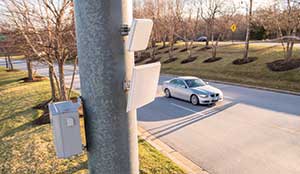Public Safety Grants Remain Strong—Even as Other Programs Shrink
Grant Funding Still Thrives in Public Safety: How Agencies Can Secure Support for LPR Technology Across the country, law enforcement agencies...
2 min read
Nate Maloney Feb 10, 2020 9:30:48 AM

The FBI reported that in 2018, a motor vehicle was stolen every 42.2 seconds in the United States. All in, 748,841 motor vehicles were stolen—which resulted in a whopping 6.3-billion-dollar loss.
In addition to the economic drain, vehicle thefts and the resulting crimes put the community you protect and serve at risk. To combat and prevent vehicle-related crimes, consider these five key ways ALPR systems play a critical role:
How many cars, trucks, and motorcycles flash past one police car on a stretch of busy highway? ALPR cameras can capture up to 900 plates per minute, meaning your officers can identify criminals as the camera matches plates against hot and white lists.
With the right ALPR system, you’re adding another pair of eyes to your agency in a combined effort to fight crime, promote justice, and keep your community safe.
Proactively, and without officer assistance, the ALPR system hunts for license plates belonging to suspended or revoked drivers and stolen vehicles. Plate after plate, the system is running camera captures, sending automatic and instant alerts to your task force when a hot list match happens so officers can take appropriate action.
ALPR alarm information tells officers which vehicle caused the alarm, at what time, and the location of the suspect vehicle when the plate was scanned. Check out this one example of a success story, where the use of ALPRs led to the arrest of a wanted suspect.
As of September 2019, a total of 967 children had been successfully recovered through the AMBER Alert system. And guess what? ALPR technology helps with AMBER alerts too—and Silver Alerts.
ALPR systems receive both AMBER and Silver Alerts, so officers in the field are aware of urgent matters involving abducted or missing persons.
Police can deploy their license plate recognition system by inserting the car’s license plate number into a shared hot list, allowing every law enforcement car outfitted with the ALPR technology to search for the missing vehicle. Once the license plate reader sees the subject plate, it will alert officers.
The information collected for each and every license plate the ALPR system reads includes a license plate number, date and time stamps, GPS coordinates, and a color photo showing a significant portion of the vehicle and its immediate environment.
Detectives can review data for specific periods of time and decipher important information, such as confirming a dealer or trafficking at a scene, as well as identifying traffic patterns and discovering vehicles that always travel together. Speaking of data, here are three things you should know about your LPR data.
Most crimes and terrorist activities worldwide involve vehicles. In geographic areas that are experiencing a surge in vehicle-related crime, monitoring and tracking a large number of vehicles efficiently becomes prudent for law enforcement.
You should find an ALPR provider that works closely with law enforcement and homeland security agencies for customized solutions to police gang-related crime, illegal immigration, anti-terrorism, border protection, and collection of taxes and duties.
Be sure to work with an ALPR systems provider that’s dedicated to the mission of aiding law enforcement in serving justice and protecting public safety. Your ALPR systems provider should offer reliable 24/7 support to ensure your officers are never left disconnected from this critical information.
Ready to speak with an ALPR system advisor about system solutions and grant funding? We're all ears.

Grant Funding Still Thrives in Public Safety: How Agencies Can Secure Support for LPR Technology Across the country, law enforcement agencies...

The Leonardo/ELSAG team is off to Denver for the largest law enforcement event of the year, the International Association of Chiefs of Police (IACP)...

As retail crime surges to unprecedented levels, Leonardo's cutting-edge plate recognition technologies offer a robust solution to safeguard...